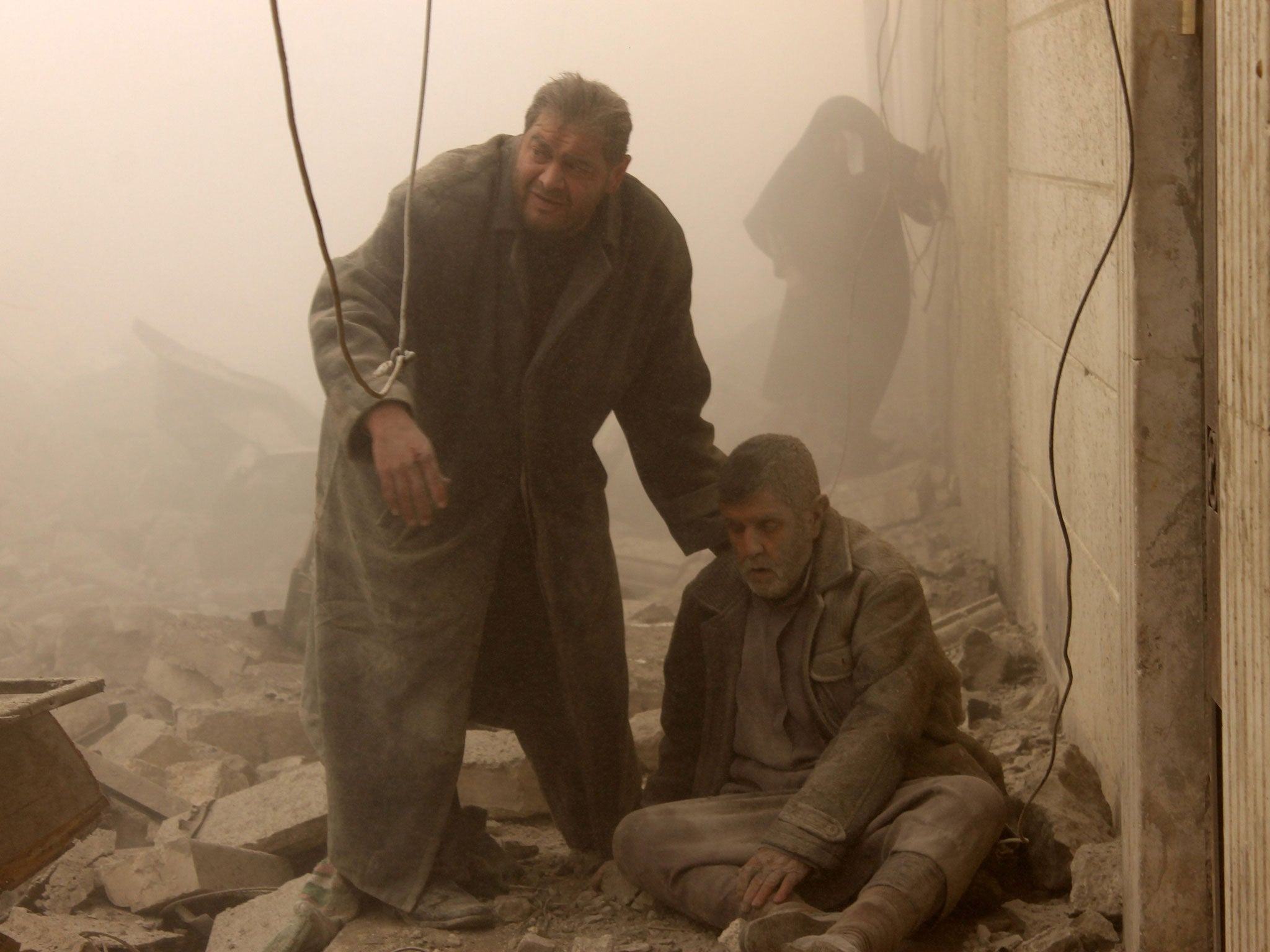Hundreds killed as Assad pounds Aleppo from the air
Since it began in mid-December, the government’s aerial bombardment has left more than 200 people dead

Hundreds of civilians have been reported killed by an intensive aerial bombing campaign in the Syrian city of Aleppo over the past week, just a month ahead of planned peace talks between the two sides fighting the country’s civil war.
Sixty-five people were killed on Sunday when government aircraft pounded rebel-held areas of Syria’s second-largest city for the eighth consecutive day, according to the UK-based Syrian Observatory for Human Rights.
Since it began on 15 December, the government’s aerial bombardment of the city and surrounding area has left 301 people dead and sent casualties streaming into the few medical facilities still open, the Observatory said. Among the dead were 87 children, 30 women and 30 rebel fighters. Residential areas and markets are among the locations that have been targeted in the campaign.
Activists in Aleppo say the majority of strikes in the past eight days have been carried out by helicopters dropping ‘barrel bombs’ – oil drums filled with explosives and pieces of metal. The bombs can cause massive damage, and are indiscriminate due to their crude way in which they are manufactured, leading to high civilian casualties.
Most of the deaths came on Sunday when a series of barrel bombs were dropped on Masaken Hanano, activists said. Recounting the aftermath of a strike on Sunday in neighbourhood, Hassoun Abu Faisal, an activist with the Aleppo Media Centre, told the Associated Press: "The medics say they are removing people in parts; they aren't sure how many there are. He said the bombs destroyed vehicles lining a main road, destroyed a two-story building and left a crater where part of the market was.
Ayman Seba'ay, an activist and local journalist who lives in the city, was just 200 metres from a strike on the Hanano neighbourhood on Saturday. He saw a helicopter hovering for around 15 minutes before it dropped a barrel bomb on a busy street.
“The helicopter was so high in the sky, it looked very small like a bug,” he said, speaking from Aleppo. “When the barrel dropped, people started to run in all directions. After 20 seconds I heard the explosion.”
Seba'ay ran to the site of the blast and found a scene of utter destruction.
“There was blood everywhere,” he said. “It was dusty. People were searching in the ruins for their family. Buildings were on fire and there was a severed arm on the side of the street. On the way to the hospital I saw two men without their heads. When I arrived there were ten bodies lying outside under a white sheet.”
Human Rights Watch said the government’s “unlawful” aerial campaign has hit areas with no obvious military target in the vicinity.
“Government forces have really been wreaking disaster on Aleppo in the last month, killing men, women, and children alike,” said Ole Solvang, senior emergencies researcher at Human Rights Watch. “The Syrian Air Force is either criminally incompetent, doesn’t care whether it kills scores of civilians – or deliberately targets civilian areas.”
More than 200 were killed during a particularly ferocious three days last week. The London-based Syrian Network for Human Rights (SNHR), documented the deaths of 232 civilians between 15 and 18 December – the vast majority from airstrikes. Another Syria-based monitoring group that systematically collects information about deaths in the conflict, the Violations Documentation Centre (VDC), collected the names of 206 killed in aerial attacks – two of whom were fighters – in the same time period.
Assad’s forces have regularly used aerial attacks to strike at rebel-held areas – with apparently little concern for the safety of civilians living there. In an 80-page report released in April this year, Human Rights Watch accused government forces of repeatedly carrying out “indiscriminate, and in some cases deliberate, air strikes against civilians.”
The devastating bombing of Aleppo has revived calls from the Syrian opposition for the West to enforce a no-fly zone over Syria. The main opposition group, the National Coalition of Syrian Revolutionary and Opposition Forces, said in a statement issued on Sunday: “A no-fly zone, backed by the Western powers, is the only means to prevent the Assad regime from slaughtering the Syrian people.”
The uptake in violence comes a month before both parties in Syria’s nearly three-year-old civil war are due to sit down in Switzerland in an attempt to hammer out a peace deal.
The bombing campaign has been viewed by analysts as an attempt by Assad’s forces to press home their advantage ahead of the talks. Although rebels hold large swathes of territory in the north of the country, they have no weapons capable of answering the government’s air power.
More than 120,000 people are thought to have been killed so far in the conflict. With violence showing no sign of abating, many observers have raised doubts over whether peace talks in Switzerland can yield any meaningful results.
In a further indication of how the nearly three-year-old civil war has taken on a sectarian nature, a car bomb exploded near a primary school in a predominantly Shia village in the central province of Homs on Sunday. State media reported that eight people were killed in the blast in Omm al-Amd – a town seen by the largely Sunni rebels as being supportive of Assad. Six children were also killed, according to the report.
Join our commenting forum
Join thought-provoking conversations, follow other Independent readers and see their replies
Comments